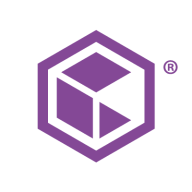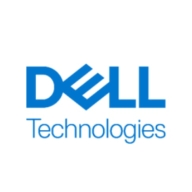

Commvault Cloud and Dell PowerProtect DP (IDPA) compete in comprehensive data protection solutions. Commvault Cloud seems to have an edge in pricing and support, while Dell PowerProtect DP stands out for its robust features.
Features: Commvault Cloud offers comprehensive data management, powerful automation capabilities, and flexible storage options. Dell PowerProtect DP features strong integration with VMware, high-performance data compression, and advanced deduplication. Users find Dell PowerProtect DP's features more valuable for complex environments.
Room for Improvement: Users suggest Commvault Cloud could enhance reporting tools, improve speed, and offer better user documentation. Dell PowerProtect DP needs an easier configuration process, improved documentation, and a smoother upgrade path. Both products have feedback concerning ease of use.
Ease of Deployment and Customer Service: Commvault Cloud is generally straightforward to deploy with responsive customer support. Dell PowerProtect DP necessitates a more complex deployment but benefits from detailed customer service. Users find Commvault Cloud easier to implement, while Dell PowerProtect DP requires more initial effort but offers strong support.
Pricing and ROI: Commvault Cloud is seen as cost-effective with quick ROI. Dell PowerProtect DP, though pricier, is believed to offer significant long-term value due to its functionality. Users perceive Commvault Cloud as more budget-friendly, whereas Dell PowerProtect DP's expense is justified by its robust capabilities.
The number of people who know Commvault Cloud is lesser compared to Veeam.
Customer support has very closed departments, requiring us to shuffle between them to get one thing done because representatives have limited accessibility.
Challenges exist in certain Linux-based cases.
On the one or two occasions where we needed to engage with Dell support, they've been most helpful.
The product offers flexibility for scalability, making it user-friendly and adaptable to different performance requirements.
I have not faced any downtimes with Commvault Cloud.
Commvault Cloud is highly stable, and I would rate it a ten out of ten.
Dell PowerProtect DP (IDPA) is a stable solution because it's a mature product.
I feel that the support is not yet up to the mark, with not enough professional engineers to provide assistance.
Dell PowerProtect DP (IDPA) requires more updates and innovations in AI-powered cyber resilience.
One area of Dell PowerProtect DP (IDPA) that can be improved is probably more integrations with third-party software, particularly third-party backup software.
Commvault Cloud is expensive, and there is room for the price to be 10-15 percent lower than what they are charging currently.
Pricing is competitive with other software vendors.
The pricing of Dell PowerProtect DP (IDPA) is competitive compared to its peers in the market.
Other features include endpoint solutions, integration with Office 365, ransomware protection, archival for long-term retention, and no ingress or egress charges.
We can back up unlimited TBs due to our per node license.
AI integration enhances backup operations by analyzing data and ensuring malware protection.
Dell PowerProtect DP (IDPA) has a scalable architecture, offering flexibility, so you can always scale the capacity to meet any increased demands.
| Product | Market Share (%) |
|---|---|
| Commvault Cloud | 6.0% |
| Dell PowerProtect DP (IDPA) | 0.7% |
| Other | 93.3% |


| Company Size | Count |
|---|---|
| Small Business | 57 |
| Midsize Enterprise | 24 |
| Large Enterprise | 81 |
| Company Size | Count |
|---|---|
| Small Business | 4 |
| Midsize Enterprise | 7 |
| Large Enterprise | 5 |
Commvault Cloud is the ultimate cyber resilience platform built to meet the demands of the hybrid
enterprise. Beyond its core functionality of data backup and recovery across diverse workloads, including applications, databases, virtual machines, and files, Commvault Cloud stands out as a robust defense against ransomware. Going beyond backup, the platform integrates advanced data security features such as encryption, access control, and threat detection, safeguarding against unauthorized access and cyber threats.
With tools for data management, classification, and migration, businesses can optimize storage costs, enhance accessibility, and comply with regulations seamlessly. Boasting cloud integration with major providers like AWS, Azure, and Google Cloud, Commvault Cloud leverages the scalability and flexibility of the cloud for comprehensive data protection and management. The platform's automation capabilities streamline tasks, and its reporting and analytics features provide valuable insights into data usage, potential risks, and optimization strategies. Commvault Cloud is not just a security tool; it is a key component of cyber resilience, enabling organizations to not only protect against cyberattacks but also recover swiftly and minimize the impact of incidents. Elevate your cyber resilience strategy with Commvault Cloud.
The PowerProtect DP series appliances is the integrated appliance solution from the Dell data protection appliances portfolio.
PowerProtect DP series appliance: Simple, efficient and agile data protection
The DP series is an all-in-one backup appliance that reduces the complexity of managing multiple data silos, point solutions and vendor relationships. The DP series simplifies deployment and management—while delivering powerful, enterprise-grade data protection capabilities for small, mid-size and enterprise organizations at a low cost-to-protect.
It is an integrated solution that offers complete backup, replication, recovery, deduplication, instant access and restore, search & analytics, seamless VMware integration — plus, cloud readiness with disaster recovery (DR) and long-term retention (LTR) to the cloud — all in a single appliance.
With the DP series, customers reduce their time-to-protect and become more agile with a solution that’s fast, protected more efficiently, can be recovered quickly and is reliable.
Simple to deploy, scale and manage
The DP series enables organizations to protect a broad ecosystem of applications quickly with a single system management console, consolidating workload protection, and eliminating infrastructure or data sprawl. The easy-to-use System Manager simplifies backups and automates daily tasks, including monitoring, management, reporting, analytics and search. The DP series delivers all-in-one data protection: protection storage and software, search and advanced monitoring and analytics, combined with cloud extensibility. It offers integration with VMware, SQL and Oracle management tools so that admins can use familiar UIs.
Powerful cloud, performance and efficiency
The DP series can scale to fit the needs of enterprises with the ability to protect up to 195 PB (logical) of data to the public, private or hybrid clouds with Cloud Tier, with no additional hardware.7 Plus, native Cloud DR with end-to-end orchestration allows enterprises to copy backed-up VMs from on-premises DP series environments to the public cloud with AWS, Azure, or VMware Cloud on AWS —3 clicks to failover and 2 clicks to failback.
The DP series provides support for modern applications like MongoDB and MySQL and is optimized for VMware. It provides fast, single-step recovery of individual files, dynamic policies for VMs as well as complete VMware images, which can be instantly accessed and migrated live from the DP series appliance back to the production environment (using vMotion) while still running, further simplifying and optimizing VM recovery. Plus, instantly access up to 64 VMs with up to 60,000 IOPS to meet the strictest SLAs.
Data protection search simplifies file-level-recovery (FLR) activities with an easy-to-use search interface. The DP series is also built on the industry-proven Data Invulnerability Architecture (DIA), for encryption, fault detection, and healing.
We monitor all Backup and Recovery reviews to prevent fraudulent reviews and keep review quality high. We do not post reviews by company employees or direct competitors. We validate each review for authenticity via cross-reference with LinkedIn, and personal follow-up with the reviewer when necessary.